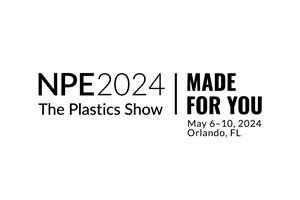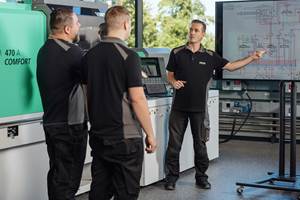R&E Tax Credit: A "Smart" Incentive for Industry 4.0 Companies
International CPA and 大象传媒 advisory Clayton & McKervey shareholders make case for improving your financial performance with R&E tax credit.
We were recently approached by CPAs Tim Finerty and Sarah Russell—shareholders at Clayton & McKervey, a Detroit-based international certified public accounting and 大象传媒 advisory firm—regarding the Research & Experimentation (R&E) tax credit, also known as the R&D tax credit.
The two authors noted that while the R&E tax credit has given 大象传媒es a powerful tool to strategically improve their bottom line, it is often overlooked or unclaimed. In reality, they note, there has never been a better opportunity for “smart” manufacturers in the Industry 4.0 era to explore and capitalize on these cash savings. Tax savings can be extensive. For companies who have adopted an Industry 4.0 approach, it’s worth it to take a second look at their qualified research activities to make sure they are receiving all the tax savings available to them. Here is further clarification.
The R&E benefit is available for the development or improvement of products, processes, techniques, formulas, inventions or software and is a dollar-for-dollar credit against the taxpayer’s federal income tax liability, which means companies may get a twofold benefit—the deduction in the year the expenditure is paid, as well as by claiming the tax credit.
Excellent candidates for the R&E tax credit are 大象传媒es related to technology, industrial production and design, but also some machine shops, tool and die shops, and custom machine manufacturers. That’s why S-corporations, start-ups and partnerships in the 大象传媒 of improving industrial production processes should consider the R&E tax credit. Unfortunately, many of these 大象传媒es are prematurely thinking about converting to a C-Corp structure under the new tax law instead.
Before a change in structure, additional factors should be considered, such as whether the 大象传媒 qualifies for the pass-through deduction; if the 大象传媒 generates research credits; whether the 大象传媒 will pay dividends to its owners; and the long-term exit strategy of the 大象传媒. Because R&E credits generated by a 大象传媒 can be used to offset any income generated from that same 大象传媒 activity, converting to a C-Corp may not be the best solution.
Examples of Qualified Research Activities (QRAs) under the R&E credit include:
- Providing custom control and automation solutions for various applications
- Developing new functionality or performance to meet customer specifications
- Development of schematic drawings for integration of system components
- Designing and developing cost-effective and innovative operational processes
- Developing new tool-specific fixturing or other tooling
- Improving processes through robotics or other types of automation techniques
- Experimenting with new alloys or other materials
- Testing new mold/die designs through sampling or trial
- Providing product and system solutions, including design engineering and mechanical fabrication
- Performing evaluations and system test
- Implementation of automated systems
There may also be Qualified Research Expenditures (QREs) if companies can substantiate how the expenditures are connected to the qualified activities, including:
- Qualified Wages of Employees performing, supervising and supporting qualified activities
- Supplies used to fabricate prototypes/items consumed during the conduct of research
- Contract Research–65 percent of fees paid to outside consultants/subcontractors/ engineers/software developers
- Estimates are allowed, however documentation of how the estimates were determined must be provided and reasonable methods must be used
Related Content
ICIS Launches: Ask ICIS Generative AI Commodities Assistant
Said to be the first of its kind, this AI assistant will enhance access to ICIS’ intelligence and insights for the energy and chemical markets.
Read MoreBoston Dynamics Stretches Into Autonomous Warehouse Robotics
The robotics company’s second commercial product is designed to take on physically challenging warehouse tasks.
Read MoreProcessing Megatrends Drive New Product Developments at NPE2024
It’s all about sustainability and the circular economy, and it will be on display in Orlando across all the major processes. But there will be plenty to see in automation, AI and machine learning as well.
Read MoreFive Ways to Increase Productivity for Injection Molders
Faster setups, automation tools and proper training and support can go a long way.
Read MoreRead Next
See Recyclers Close the Loop on Trade Show Production Scrap at NPE2024
A collaboration between show organizer PLASTICS, recycler CPR and size reduction experts WEIMA and Conair recovered and recycled all production scrap at NPE2024.
Read MoreMaking the Circular Economy a Reality
Driven by brand owner demands and new worldwide legislation, the entire supply chain is working toward the shift to circularity, with some evidence the circular economy has already begun.
Read MoreBeyond Prototypes: 8 Ways the Plastics Industry Is Using 3D Printing
Plastics processors are finding applications for 3D printing around the plant and across the supply chain. Here are 8 examples to look for at NPE2024.
Read More














